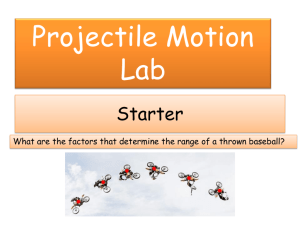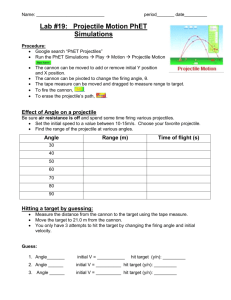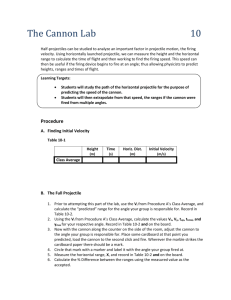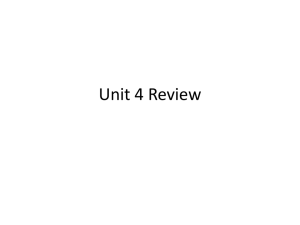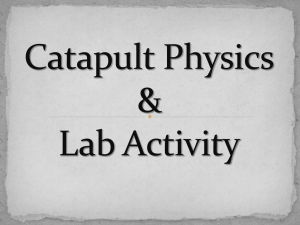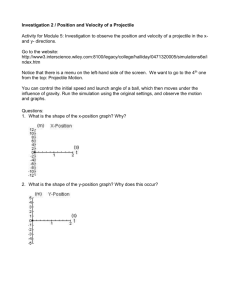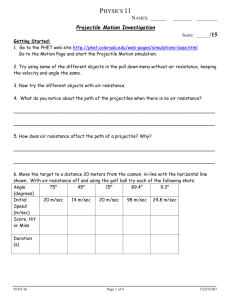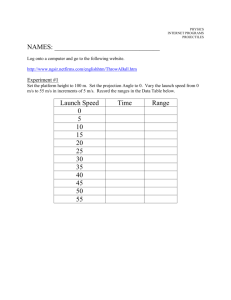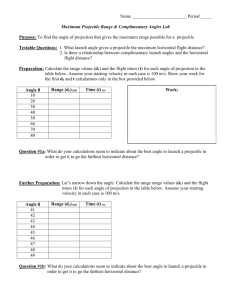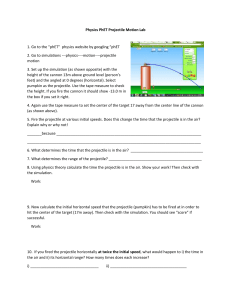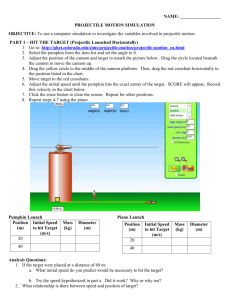Projectile Motion Simulation
advertisement
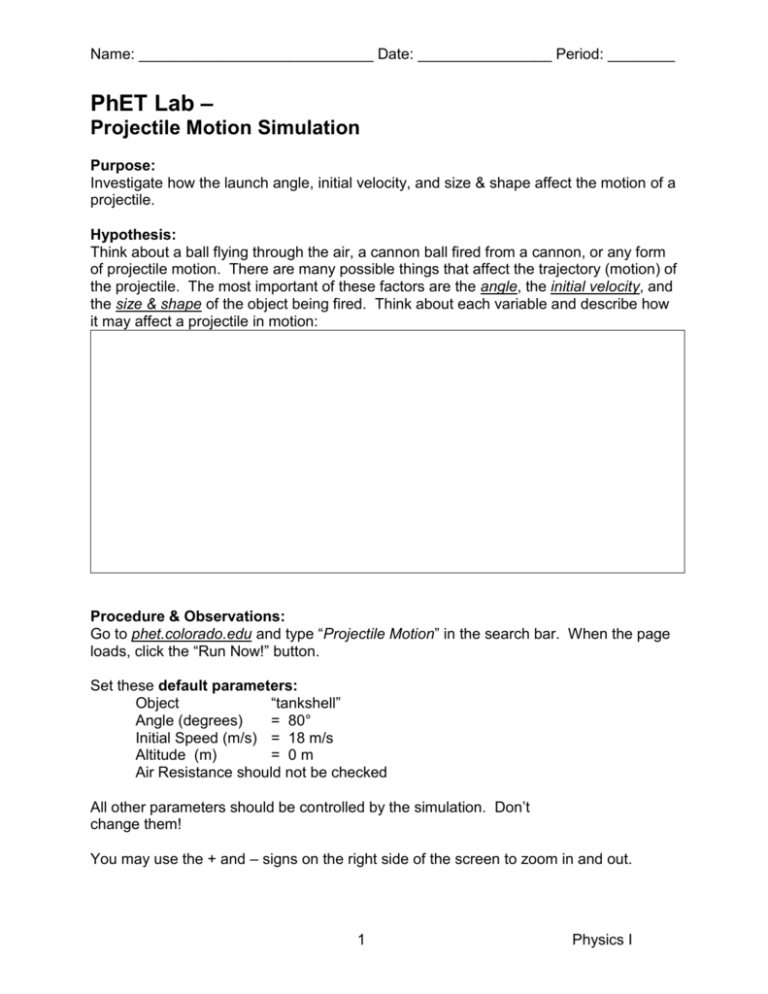
Name: ____________________________ Date: ________________ Period: ________ PhET Lab – Projectile Motion Simulation Purpose: Investigate how the launch angle, initial velocity, and size & shape affect the motion of a projectile. Hypothesis: Think about a ball flying through the air, a cannon ball fired from a cannon, or any form of projectile motion. There are many possible things that affect the trajectory (motion) of the projectile. The most important of these factors are the angle, the initial velocity, and the size & shape of the object being fired. Think about each variable and describe how it may affect a projectile in motion: Procedure & Observations: Go to phet.colorado.edu and type “Projectile Motion” in the search bar. When the page loads, click the “Run Now!” button. Set these default parameters: Object “tankshell” Angle (degrees) = 80° Initial Speed (m/s) = 18 m/s Altitude (m) = 0m Air Resistance should not be checked All other parameters should be controlled by the simulation. Don’t change them! You may use the + and – signs on the right side of the screen to zoom in and out. 1 Physics I Name: ____________________________ Date: ________________ Period: ________ How does angle affect motion? Change the angle option to read 15° and then click fire, and observe the resulting motion path. When it finishes, repeat the instructions, but use angles of 30°, 45°, 60°, 75°. Determine the trend of the data; that is, compare the motion paths of each angle, and write your observations below. Observations should include a discussion of (1) range, (2) maximum height, (3) time of flight. Sample observations: “Farthest range.” “Higher than 10° but not as high as 20°.” “Shortest time of flight” Angle 15° Observations 30° 45° 60° 75° Discuss the trends in the data. How is range, maximum height, and time of flight related to angle? 2 Physics I Name: ____________________________ Date: ________________ Period: ________ How does initial velocity affect motion? Reset the parameters to default parameters specified on page 1 and click the “Erase” button (this should erase all your motion paths from above). Now change the initial velocity to 15 m/s and click fire, and observe the resulting motion path. When it finishes, repeat the instructions, but use 18 m/s, 21 m/s, 24 m/s, 27 m/s, and 30 m/s. As before, write observations below. Initial Velocity 15 m/s Observations 18 m/s 21 m/s 24 m/s 27 m/s Discuss the trends in the data. How is range, maximum height, and time of flight related to initial velocity? 3 Physics I Name: ____________________________ Date: ________________ Period: ________ How does size & shape affect motion? Reset the parameters to default parameters specified on page 1 and click on the “Erase” button. Now change the object to a baseball, click on fire, and observe the motion path. Repeat the instructions for a bowling ball, adult human, piano, and Buick. What do you notice about the motion paths? Reset the parameters to default parameters and click on the “Erase” button. Now repeat part 3, but check the air resistance box. Observe the motion paths and record your observations below. Be sure to think about the size, shape, and weight of each object. 4 Physics I Name: ____________________________ Date: ________________ Period: ________ Calculations: On your screen there is a target. Vary your initial velocity and angle until you hit the target. Record these values below. initial velocity = ___________ angle = __________ Use this information to find the x and y components of the initial velocity. Draw the triangle below, showing the components. vx = ________________ vyi = _______________ Organize your knowns and unknowns: x-direction y-direction Next, consider only the motion of the projectile in the y-direction and determine how long it takes to reach the peak of its flight. Use this information to find the total time of flight. Peak of flight: t = _______________ Total time: t = _______________ Now calculate how far the projectile should have gone in the x-direction dx = _____________ Go back to the simulation. Use the measuring tape to determine the displacement from the cannon to the target. Does this measurement match the distance you just calculated? 5 Physics I
